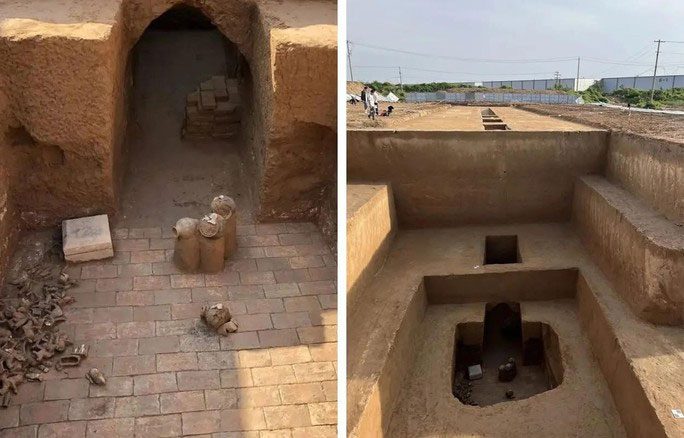The tomb of Emperor Xiu Min, the founder of the Northern Zhou dynasty (557 – 581), has been discovered near the city of Hanzhong, Shaanxi Province, China.
According to Heritage Daily, Chinese archaeologists excavated near the airport highway in Hanzhong and uncovered a 147-meter-long trench leading to a tomb oriented along a north-south axis.

Structures of the tomb of Emperor Xiu Min recently excavated – (Photo: Chinese Academy of Social Sciences).
The tomb contained disturbed funerary items, including ceramic vases and numerous small statues depicting warriors, cavalry units, a camel, and various unidentified creatures. The bottom of the tomb is 10 meters deep.
The research team also discovered an inscription referencing the name “Wu Wen Jue” – the birth name of Emperor Xiu Min.
According to a press release from the Chinese Academy of Social Sciences (CASS), the discovery of the tomb of Emperor Xiu Min is highly significant. This is the second tomb of a Northern Zhou emperor to be found, following the tomb of Emperor Wu of the Western Zhou.
Ancient records indicate that Emperor Xiu Min ascended the throne at the age of 15, establishing Chang’an as the capital. However, he was deposed less than a year into his reign and subsequently assassinated.
Upon his ascension, this founding emperor did not use the title “Emperor” like previous dynasties but instead referred to himself as “Tian Wang” (Heavenly King).


















































